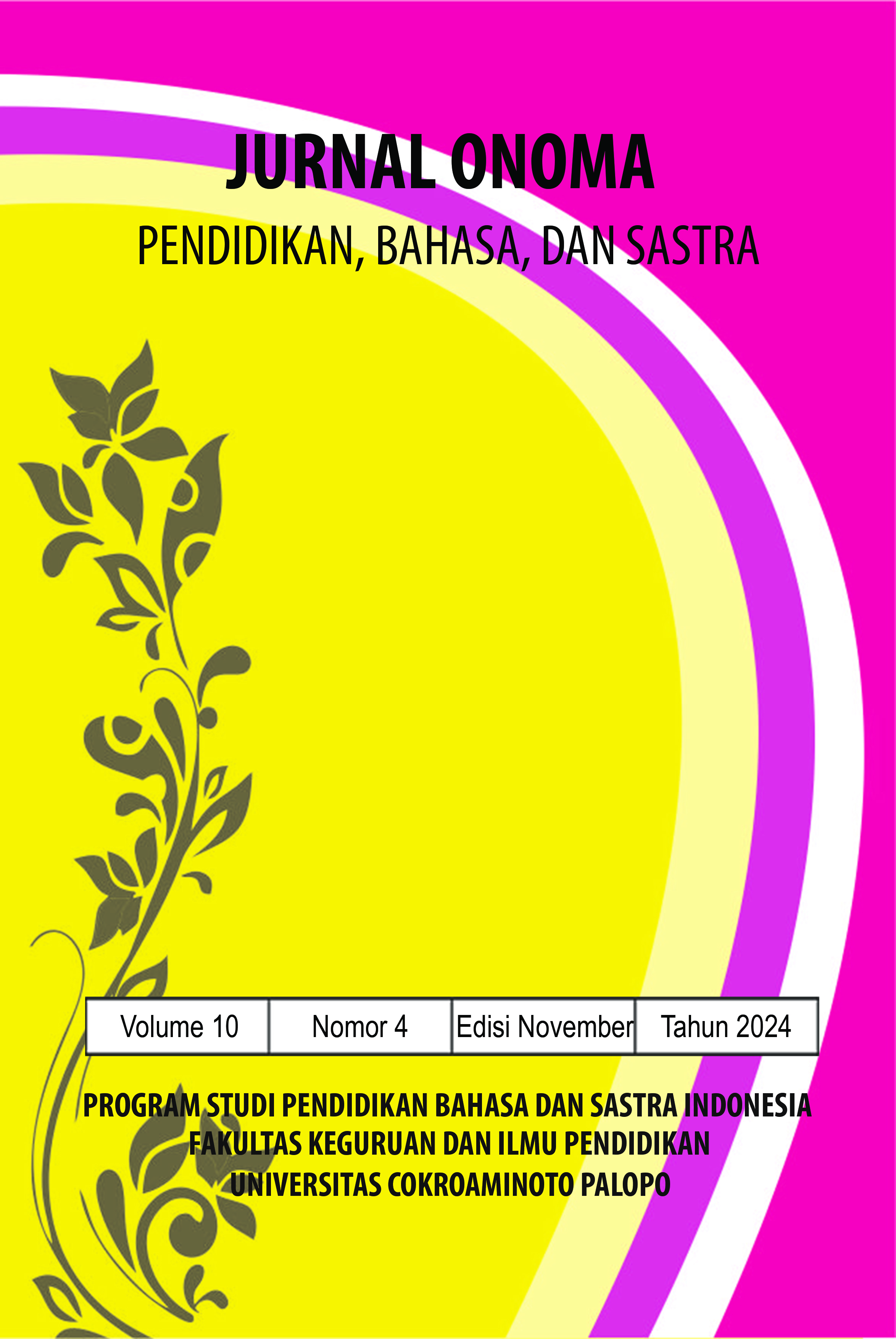Gembala Manusia dalam Naskah Film The Island: Nekropolitik Mbembe
https://doi.org/10.30605/onoma.v10i4.4156
Keywords:
nekropolitik, subjek the living death, mbembe, the islandAbstract
The Island menceritakan tentang bagaimana perusahaan bernama The Sanger Institute mengelola investasi kesehatan dengan memproduksi agnate (budak donor). Dalam perusahaan ini, para agnate terisolasi dalam matriks-matriks birokrasi totaliter. Penelitian ini bertujuan untuk menyingkap nekropolitik dalam naskah film The Island karya Caspian Tredwell-Owen dengan menggunakan metode deskriptif-kualitatif. Perspektif nekropolitik Mbembe digunakan sebagai lensa untuk melihat bagaimana perusahaan memiliki necropower, dan agnate sebagai subjek the living death. Hasil penelitian ini diuraikan sebagai berikut: 1) Perusahaan sebagai kedaulatan tertinggi karena menciptakan agnate —menerapkan nekropolitik; 2) The Island merupakan istilah yang digunakan perusahaan untuk mengkonstruksi tatanan sosial-politik yang ditujukan untuk agnate —berupa tujuan akhir (terbunuh) bagi agnate sebagai subjek the living death.
Downloads
References
Aarseth, Espen J. (1997). Cybertext: Perspective on Ergodic Literature. Baltimore: The John Hopkins University Press. DOI: https://doi.org/10.56021/9780801855788
Aarseth, Espen. (2012). A narrative theory of games. Center for Computer Games Research, IT University of Copenhagen, 2300 Copenhagen, Denmark. DOI: https://doi.org/10.1145/2282338.2282365
Bram, Uri. (2023). The Best Ergodic Fiction recommended by Arianna Reiche. Diakses melalui https://fivebooks.com/best-books/best-ergodic-fiction-arianna-reiche/
Chatman, S. (1978). Story and Discourse: Narrative Structure in Fiction and Film. Cornell University Press. https://doi.org/10.1075/is.8.2.02
Agamben, G. (1998). Homo Sacer: Sovereign power and bare life, trans. Daniel Heller.
Egenfeldt-Nielsen, S., Smith, J.H., & Tosca, S. P. (2020). Understanding video games: the essential introduction (4th edition). Routledge. DOI: https://doi.org/10.4324/9780429431791
Foucault, M. (1990). The history of sexuality: An introduction, volume I. Trans. Robert Hurley. New York: Vintage, 95, 1–160.
Mbembe, A. N., & Corcoran, S. N. (2019). Durham. NC: Duke University Press Books.
Moleong, L. J. (2017). Metode penelitian kualitatif, Bandung: PT. Remaja Rosda Karya.
Montenegro, M., Pujol, J., & Posocco, S. (2017). Bordering, exclusions and necropolitics. Qualitative Research Journal, 17(3), 142–154. DOI: https://doi.org/10.1108/QRJ-08-2017-089
Novri, N., Rahmansyah, A., & Iskandar, M. (2015). Analisis Narasi Interaktif Pada Game Farm Ville2. eProceedings of Art & Design, 2(1).
Setiawan, F. N. (2024). Unsur Naratif Pada Permainan Seluler “Selera Nusantara–Episode: Nasi Goreng”. Ilmu Budaya: Jurnal Bahasa, Sastra, Seni, dan Budaya, 8(1), 121-132. DOI: https://doi.org/10.30872/jbssb.v8i1.14131
Umam, K. (2023). Sastra Ergodik Dalam Gim Zepeto: Kajian Ludologi. In Seminar Nasional Literasi Prodi PBSI FPBS UPGRIS (pp. 231-235).
Walter, Damien. (2014). I tell you, ergodic is the future of fiction. Diakses melalui https://damiengwalter.com/2014/07/25/i-tell-you-ergodic-is-the-future-of-fiction/.
Tredwell-Owen, C. (2004). The Island. Daily Script, 4(4), 121–129. Retrieved from https://www.dailyscript.com/scripts/theisland.pdf
Downloads
Published
How to Cite
License
In submitting the manuscript to the journal, the authors certify that:
- They are authorized by their co-authors to enter into these arrangements.
- The work described has not been formally published before, except in the form of an abstract or as part of a published lecture, review, thesis, or overlay journal.
- That it is not under consideration for publication elsewhere,
- That its publication has been approved by all the author(s) and by the responsible authorities – tacitly or explicitly – of the institutes where the work has been carried out.
- They secure the right to reproduce any material that has already been published or copyrighted elsewhere.
- They agree to the following license and copyright agreement.
License and Copyright Agreement
Authors who publish with Onoma Journal: Education, Languages??, and Literature agree to the following terms:
- Authors retain copyright and grant the journal right of first publication with the work simultaneously licensed under Creative Commons Attribution License (CC BY 4.0) that allows others to share the work with an acknowledgment of the work's authorship and initial publication in this journal.
- Authors are able to enter into separate, additional contractual arrangements for the non-exclusive distribution of the journal's published version of the work (e.g., post it to an institutional repository or publish it in a book), with an acknowledgment of its initial publication in this journal.
- Authors are permitted and encouraged to post their work online (e.g., in institutional repositories or on their website) prior to and during the submission process, as it can lead to productive exchanges, as well as earlier and greater citation of published work.

















